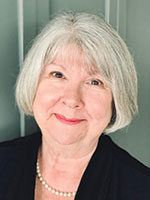Kathy Ruscitto
 FIRST, I WANTED to share how much I enjoy feedback on these editorials. When people take time to agree or disagree, it improves both of our thinking. My perspective comes from my
FIRST, I WANTED to share how much I enjoy feedback on these editorials. When people take time to agree or disagree, it improves both of our thinking. My perspective comes from my
experience. Thank you for sharing your experiences!
This column is on regional reach.
Living in the Adirondacks, I often receive phone calls from families in crisis — generally at night or on weekends. Care is limited to primary care in many rural areas, with no urgent care and little access to specialty care. “Where should I go?” is the most common question I hear.
Resident population has grown in the Adirondacks and many rural communities post COVID, and summer and seasonal tourism has also swelled throughout the region. The same thing
has happened in every tourist community around us.
When I get calls about where to go for care, I encourage them to call their primary care physician wherever they are and request a telemedicine consult. However, people often go to the local ambulance center, and the staff there may not be available if they are responding to a call. I have developed a shared list of urgent care centers in the region from Utica to Rome to Syracuse, and I also refer people to LivingADK (livingadk.org), an organization that
advocates for the region and maintains a list of regional resources.
Families travel routinely from throughout the ADK Park to Utica, Rome and Syracuse for orthopedic care, mental health care, cardiac care, emergency care and testing. They share with me the gaps they find and the difficulty they have in figuring out where to go. Sometimes they just pack up in the summer and return to their home communities hours away when they can’t figure out where and how to access care.
So my questions to your practice are these: Are you a local or regional resource? Do you offer screening clinics in rural communities? How do patients in rural communities, particularly
in the summer, know you are there? Does your marketing reflect your regional presence?
Conversely, I ask community leaders about how rural communities educate their residents and plan information around access to care for summer residents and tourists. Old Forge estimates it can go from 2,000 to 20,000 summer residents and tourists on a busy weekend. When there is an injury, the closest care is one to two hours away by car.
The landscape in health care is changing, and patients are traveling further to access specialty care. Many large centers from the Mayo Clinic to Cleveland Clinic are offering telemedicine and access in ways that minimize travel.
What are the opportunities available through technology to expand your regional reach? How do regional screening clinics open up access for patients? Finally, are there innovative solutions for accessing care in tourist communities where an urgent care center could only be successful in peak season?
Think about reaching out to the regional organizations who provide info to summer visitors and new residents. I know LivingADK would love to hear from others not included in their database.
Thanks for all you do in serving these communities.
Kathryn Ruscitto, Advisor, can be reached at linkedin.com/ln/kathrynruscitto or at krusct@gmail.com.
Further Reading
1. Emerging Stronger From the Crisis: What’s Next
for Regional Providers? (mckinsey.com/industries/
healthcare-systems-and-services/our-insights/emerging-strongerfrom-
the-crisis-whats-next-for-regional-providers)
2. How Standing Up Regional Markets Is Improving Access to Health
Care (health.mil/News/Articles/2022/01/11/How-Standing-Up-
Regional-Markets-is-Improving-Access-to-Health-Care)
3. Healthcare Access in Rural Communities (ruralhealthinfo.org/
topics/healthcare-access






You raise an important life issue – hopefully your words will bring out new information for locals and tourists to ADK. You still are serving the community – good for you!